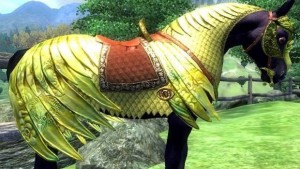Do you remember when you were a little kid? Chances are you had a video game system in your house that played those blocky games you bought at the store. Most people, at one point or another, have navigated Mario through the Mushroom Kingdom, making him jump to hit blocks and toss fireballs at approaching Goombas. Those games were linear in that what you paid for is what you got. There was no connecting your Nintendo Entertainment System or Atari 2600 to the internet to download games or update ones you had purchased. What you purchased, no matter how crappy the game was, was what you were stuck with.
Technology has advanced since then, utilizing the wonders of the World-Wide Internets. For example, you can connect an XBox 360 to a network via internet access that allows you to download games and play with others online. PC users have a wide range of online stores to choose from, one popular one being Steam. Steam allows you to buy the game via an online catalog, download, and play the game. Steam keeps a record of what you buy via a library so that you can uninstall and reinstall games at your leisure, which comes in handy when you don’t feel like hunting for your store-bought boxed version in your attic or basement. Most of these online stores, including Steam, also update your games regularly with the latest patch the developer pushes out. (A patch is essentially a game update, tweaking the game or adding content as the developers see fit) The downside to gaming this way is that some games require a constant internet connection due to the various security programs the developer has in place, but DRM (Digital Rights Management) is a whole separate beast I’ll touch on some other time.
DLC, or downloadable content, takes the idea of downloading and playing games one step further. Developers will often develop additional content for a game rather than make a brand new one, releasing said content either for free or for a price. Obviously this practice can be abused if the developer has no reservations about withholding game content from the original game and later adding it for a fee. Some DLC packages I have seen are completely ludicrous.
For example, The Elder Scrolls V: Oblivion is a role-playing game where you interact with the world and the places therein either by walking there or by traveling via horseback. Traveling via horseback was often unnecessary as you could “fast-travel”, or warp to places you’ve already been automatically with a click of the mouse. After the game was released, they offered “horse armor” as DLC for 200 Microsoft points (about $2.50). Yes, you could buy armor for your digital horse giving it more health. As I stated already, using a horse was mostly unnecessary seeing as how you could fast travel to key places instantly. I was shocked when I first heard about it and realized just how bad things could become should companies focus solely on making a quick buck off of their loyal customers.
Unfortunately, it did get worse. EA’s Need For Speed World currently has the Koenigsegg CCX “Elite” Edition car out for DLC. How much do you think a digital in-game car would cost? Keep in mind, this special car would be unique to only that one game. Fifty cents? A dollar? Try a hundred. Yes, that is $100.00 USD for a digital car. However, the good news is that it is currently on sale for $75.00 until December 21st. I find that gesture to be extremely generous on EA’s part, don’t you?
EA isn’t the only developer eye-gouging its customers. If you do have Steam, go take a look at all of the DLC available for purchase. Tropico 4, a Simcity-like game from a series dear to my heart, is offering a DLC for $4.99 that gives you access to a special building. The Warhammer 40k: Dawn of War II games offer .99 cent weapons you can equip onto members of your squad. Call of Duty: Modern Warfare is a series most have at least heard of, featuring DLC map packs that give players who play multiplayer online the chance to fight on new maps. These often price at $15.00 for five maps. Railworks, a train simulator where you drive a train, has over sixty different DLC packages available ranging from $5.00 to $35.00 a piece. In most of those you gain access to a new train and a few small extras. World of Warcraft has pets you can purchase to follow your character around in-game, averaging at $15.00 a pop.

Get the Stanier Jubilee Steam Locomotive RailWorks Add-on, which features one train available in four different colors, five scenarios, and two free roams for a low, low price of $21.99.
To be fair, there are companies out there (mostly indie developers) that give their customers free DLC as a thank you for being a loyal customer. Many of my regular readers have probably noticed the string of Dungeon Defender articles I have written; most of their DLC was free. Steam often holds a special deal program, reducing the game and its DLC to what some may consider to be acceptable prices.
I sincerely hope that the future of the gaming industry doesn’t revolve around how much cash developers can squeeze out of their customers. What disappoints me is that some people are willing to pay $2.50 for horse armor or $100.00 for a digital car for various reasons. Companies will continue to sell the product so as long as people are willing to buy it, and buy it they do. In the end you may end up paying over a $100.00 on a game for all of the extra content that was offered, though part of you may come to realize that many of those extra features could have just been easily patched in for free to reward their consumer base.
I guess it all comes down to your personal comfort level. How much are YOU willing to pay for DLC, especially if it’s for a game you’re really involved with?
—


